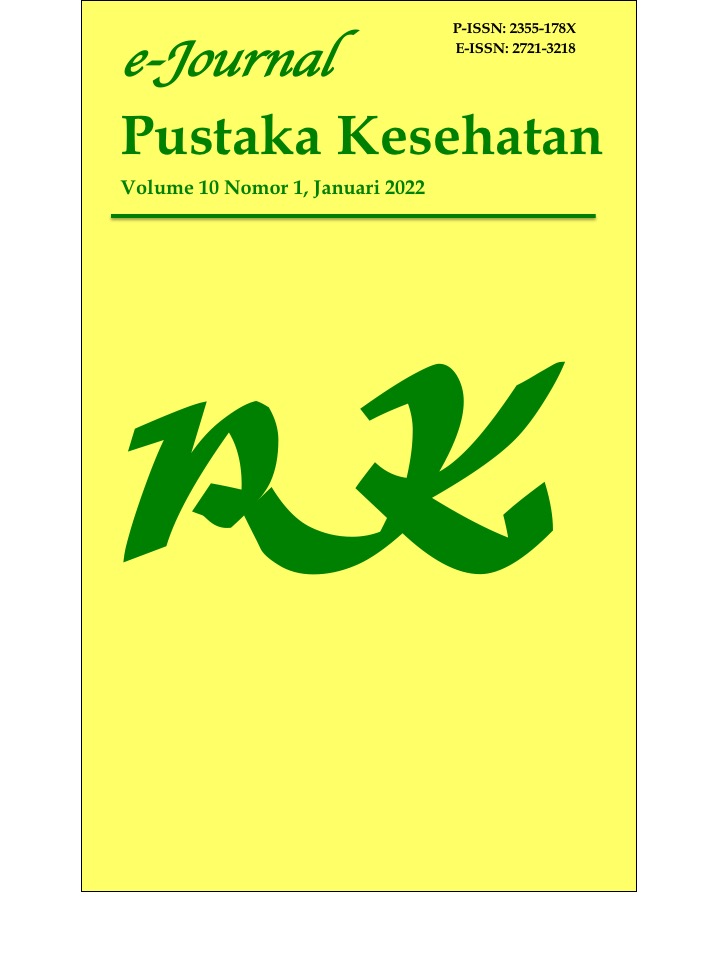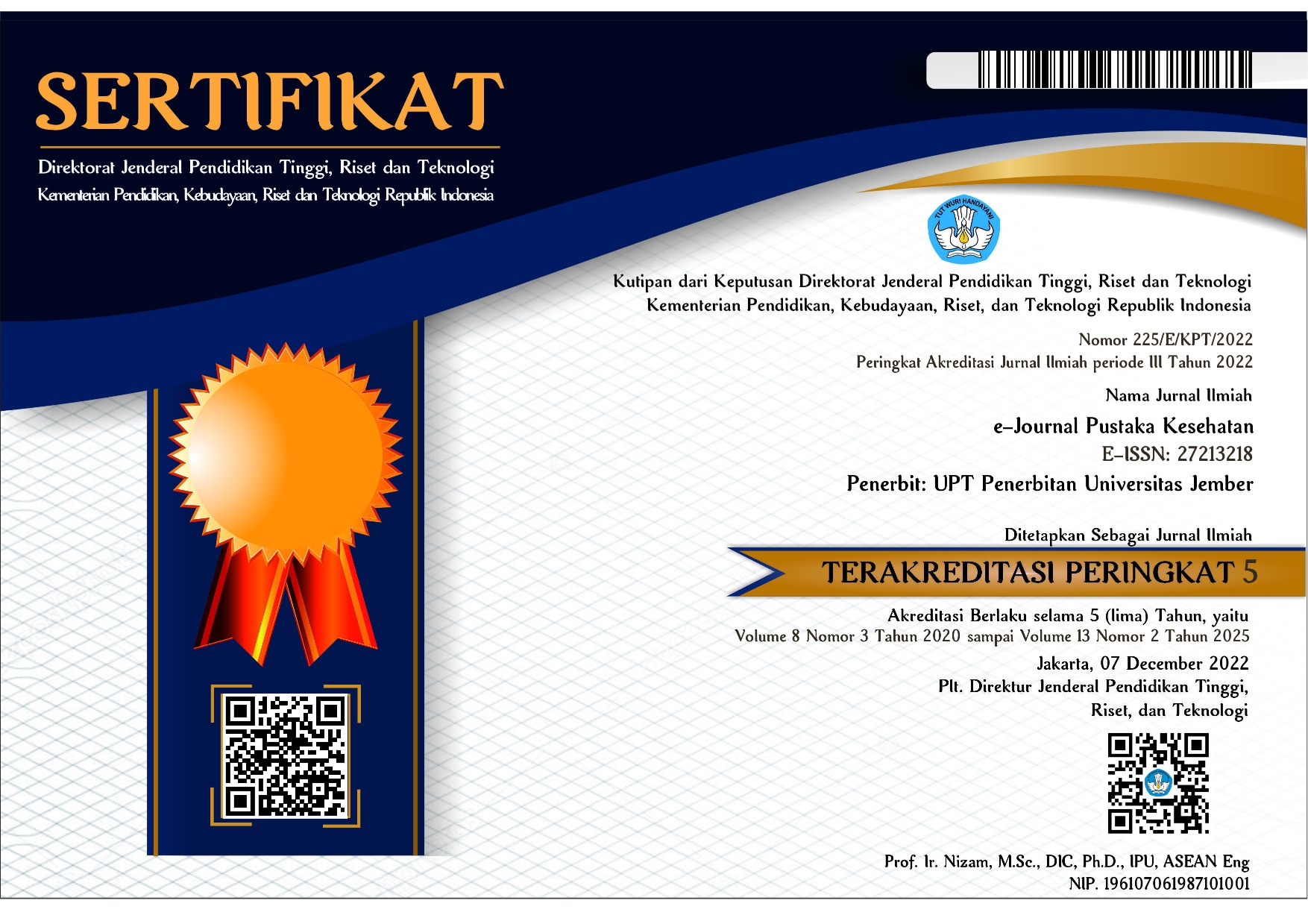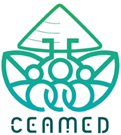Description of Nursing Implementation with Main Nursing Problem on Child Diarrhea of The Regional Hospital in Besuki Residency
DOI:
https://doi.org/10.19184/pk.v10i1.11086Keywords:
Diarrhea, Nursing Implementation, Children Aged 0-18 yearsAbstract
Diarrhea are one of the diseases that causes the death of children number two in 2016 and has the main causative factors, namely groups of viruses, bacteria and parasites. The purpose of this study was to find out a description of nursing implementation in diarrhea children aged 0-18 years in the area of Besuki residency which is famous for its agro-cultural with high mortality problems in children. This research method was descriptive with a retrospective approach and use a purposive sampling technique. The sample in the study was 199 diarrhea children aged 0-18 years of the regional hospital in the area of Besuki residency. Data collection tools in this study is using checklist sheets. The result of the study showed diarrhea nursing problems that often arise with observational nursing action, namely pulse strength monitoring, number of frequencies, monitoring a number of respiratory. Observation has influence which is high enough to detect changes in life support systems. Vital signs are a statistical measure, especially for clients who are medically unstable, can know the baseline data to determine the stress response of physiology or psychology, concerning factors related to the existing disease and to assess the client's response to the conversion given by health workers. Observation is a basic method of assessment and assessment for clients to find out clinical signs in establishing a diagnosis of disease and for planning appropriate medical therapy.
Downloads
References
/10665/44174/9789241598415_eng.pdf;
jsessionid=F8F9FA73080F3AB341CDC 6FCDA4FBB79?sequence=1
[2] Ikatan Dokter Anak Indonesia. Pedoman pelayanan medis. Jakarta: Badan Penerbit Ikatan Dokter Anak Indonesia; 2011.
[3] Suseno SU. Profil kesehatan indonesia tahun 2016. Jakarta: Kementerian Kesehatan Republik Indonesia; 2017.
[4] Arif M, Kumala S. Gangguan gastrointestinal. Jilid 1. Jakarta: Salemba Medika; 2013.
[5] Potter, Perry. Buku ajar fundamental keperawatan. Edisi 4. Jakarta: EGC; 2005.
[6] Potter, Perry. Fundamental keperawatan. Edisi 7. Jakarta: Salemba Medika; 2010.
[7] Hidayat. Pengantar ilmu keperawatan anak. Edisi 1. Jakarta: Salemba Medika; 2008.
[8] Heather HT, Kamitsuru S. Diagnosis keperawatan definisi dan klasifikasi edisi 11. Jakarta: EGC; 2018.
[9] Yusuf. Profil diare di ruang rawat inap anak. Jurnal Kedokteran [Internet]. 2011 [cited 23 April 2019]; 13(4): [pp: 265- 270]. Available from: https://saripediatri.org/index.php/sari- pediatri/article/view/424/356
[10] Wartonah. Penyakit tropis epidemiologi, penularan, pencegahan, dan pemberantasannya edisi 2. Jakarta: Erlangga; 2011.
[11] Leksana. Strategi terapi cairan pada dehidrasi. Jurnal Keperawatan [Internet]. 2015 [cited 24 April 2019]; 42(1): [pp: 107-114]. Available from: https://jurnal.unimus.ac.id/index.php/psn 12012010
[12] Ignatius. Tinjauan terapi nutrisi pada anak diare. Semarang: Fakultas Kedokteran Universitas Diponegoro; 2000.
[13] Anonim. Implementing the new recommendations on the clinical management of diarrhea. Geneva: Wolrd Health Organization; 2006 [cited
20 Oktober 2018]. Available from: https://apps.who.int/iris/bitstream/handle
/10665/43456/9241594217_eng.pdf;jses sionid=A5B26CF16A7E47F89C4FB4EC
35B0B3F3?sequence=1.
Downloads
Published
Issue
Section
License
e-Journal Pustaka Kesehatan has CC-BY-SA or an equivalent license as the optimal license for the publication, distribution, use, and reuse of scholarly work. Authors who publish with this journal retain copyright and grant the journal right of first publication with the work simultaneously licensed under a Creative Commons Attribution-ShareAlike 4.0 International License that allows others to share the work with an acknowledgment of the work's authorship and initial publication in this journal.







